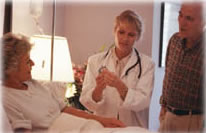 Leg Stress Fracture, Tibia Leg Stress Fracture, Tibia |
 Liver Injury Liver Injury |
 Neck Dislocation Neck Dislocation |
 Neck Fracture Neck Fracture |
 Neck Sprain Neck Sprain |
 Neck Strain Neck Strain |
 Nose Injury Nose Injury |
 Pelvis Strain, Hip-Trunk Pelvis Strain, Hip-Trunk |
 Pelvis Strain, Ischium Pelvis Strain, Ischium |
 Perineum Contusion Perineum Contusion |
 Rib Dislocation Rib Dislocation |
 Rib Fracture Rib Fracture |
 Rib Sprain Rib Sprain |
 Rib Strain Rib Strain |
 Shoulder-Blade (Scapula) Bursitis Shoulder-Blade (Scapula) Bursitis |
 Shoulder-Blade (Scapula) Contusion Shoulder-Blade (Scapula) Contusion |
 Shoulder-Blade Fracture, Acromion Shoulder-Blade Fracture, Acromion |
 Shoulder-Blade (Scapula) Fracture, Coracoid Process Shoulder-Blade (Scapula) Fracture, Coracoid Process |
 Shoulder-Blade (Scapula) Fracture, Glenoid Fossa Shoulder-Blade (Scapula) Fracture, Glenoid Fossa |
 Shoulder-Blade (Scapula) Fracture, Neck Shoulder-Blade (Scapula) Fracture, Neck |
 Shoulder-Blade (Scapula) Strain Shoulder-Blade (Scapula) Strain |
 Shoulder Bursitis, Gleno-Humeral Shoulder Bursitis, Gleno-Humeral |
 Shoulder Bursitis, Subacromial Shoulder Bursitis, Subacromial |
 Shoulder Contusion Shoulder Contusion |
 Shoulder Dislocation Shoulder Dislocation |
 Shoulder Sprain, Acromio-Clavicular Shoulder Sprain, Acromio-Clavicular |
 Shoulder Sprain, Gleno-Humeral Shoulder Sprain, Gleno-Humeral |
 Shoulder Strain Shoulder Strain |
 Shoulder Tendinitis & Tenosynovitis Shoulder Tendinitis & Tenosynovitis |
 Skin Abrasion Skin Abrasion |
 Skin Laceration Skin Laceration |
 Skin Puncture Wound Skin Puncture Wound |
 Spine Fracture, Lower Thoracic & Lumber Region Spine Fracture, Lower Thoracic & Lumber Region |
 Spine Fracture, Sacrum Spine Fracture, Sacrum |
 Spine Fracture, Tailbone Spine Fracture, Tailbone |
 Spine Stress-Fracture, Neck or Back Spine Stress-Fracture, Neck or Back |
 Spleen Rupture Spleen Rupture |
 Thigh-Bone Fracture Thigh-Bone Fracture |
 Thigh Contusion Thigh Contusion |
 Thigh Hematoma Thigh Hematoma |
 Thigh Injury, Hamstring Thigh Injury, Hamstring |
 Thigh Strain, Quadriceps Thigh Strain, Quadriceps |
 Thigh Strain Thigh Strain |
 Thumb Fracture Thumb Fracture |
 Thumb Sprain Thumb Sprain |
 Toe Dislocation Toe Dislocation |
 Toe Exostosis Toe Exostosis |
 Toe Fracture Toe Fracture |
 Tooth Injury & loss Tooth Injury & loss |
 Wrist Contusion Wrist Contusion |
 Wrist Dislocation, Lunate Wrist Dislocation, Lunate |
 Wrist Dislocation, Radius or Ulna Wrist Dislocation, Radius or Ulna |
 Wrist Ganglion Wrist Ganglion |
 Wrist Sprain Wrist Sprain |
 Wrist Strain Wrist Strain |
 Wrist Tenosynovitis Wrist Tenosynovitis |
|
|
Toe Dislocation
Injury to any toe joint so that adjoining bones are displaced from their normal position and no longer touch each other. Fractures and ligament sprains frequently accompany this dislocation. Toe dislocations are a common problem for athletes.
Body Parts Involved
- Bones of the toes.
- Ligaments that hold toe bones in place.
- Soft tissue surrounding the dislocation site, including periosteum (covering to bone), nerves, tendons, blood vessels and connective tissue.
Causes
- Direct or indirect blow to the foot.
- End result of a severe toe sprain.
- Congenital abnormality, such as a shallow or malformed joint surface.
Signs & Symptoms
- Excruciating pain in the toe at the time of injury.
- Walking difficulty.
- Severe pain when attempting to move the injured toe.
- Visible deformity if the dislocated toe has locked in the dislocated position. Bones may spontaneously reposition themselves and leave no deformity, but damage is the same.
- Tenderness over the dislocation.
- Swelling and bruising at the injury site.
- Numbness or paralysis beyond the dislocation from pinching, cutting or pressure on blood vessels or nerves.
Treatment
First Aid
- Use instructions for R.I.C.E., the first letters of compression and elevation.
- The doctor will manipulate the dislocated toes
to return them to their normal position.
- Manipulation should be accomplished within 6 hors, if possible. After that time, many tissues lose their elasticity and become difficult to return to a normal functional position.
Continuing Care
- Use an ice pack 3 or 4 times a day. Wrap ice chips or cubes in a plastic bag, and wrap the bag in a moist towel. Place it over the injured area for 20 minutes at a time.
- You may apply heat instead of ice, if it feels better. Use heat lamps, hot soaks, hot showers, heating pads, or heat liniments and ointments.
- Take whirlpool treatments, if available.
- Wrap the injured foot with an elasticized between treatments.
- Massage gently and often to provide comfort and decrease swelling. Stroke from the toes toward the heart.
- Have a metatarsal bar sewed into your shoe by a shoe repairmen or brace-maker.
Medication
Your doctor may prescribe:
- Local anesthesia or muscle relaxants to make joint manipulation possible.
- Acetaminophen or aspirin to relieve moderate pain, and narcotic pain relievers for severe pain.
- Stool softeners to prevent constipation due to decreased activity.
Home Diet
- Drink only water before manipulation or surgery to correct the dislocation. Solid food in your stomach makes vomiting while under general anesthesia more hazardous.
- During recovery, eat a well-balanced diet that includes extra protein, such as meat, fish, poultry, cheese, milk and eggs. Increase fiber and fluid intake to prevent constipation that may result from decreased activity.
Diagnostic Measures
- Your own observation of symptoms.
- Medical history and physical exam by a doctor.
- X-rays of the foot and ankle.
Prevention Tips
Wear appropriate, well-designed shoes during competition or other athletic activity. Tape the toes to prevent reinjury.
|
|





